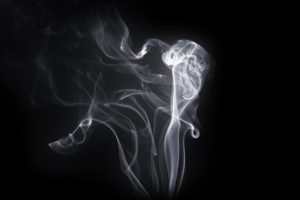
A British study published recently in the medical journal The Lancet found that the risk of psychosis was more than five times higher for those who used high-potency marijuana daily than for those who had never tried marijuana.
The risk was three times higher for those who used high-potency marijuana less frequently. The risk was also three times higher for those who used less potent marijuana, but on a daily basis.
Psychosis is a condition in which the individual becomes so mentally disordered that he loses contact with reality. The symptoms include hallucinations, delusions and paranoia.
Marijuana (cannabis) is a hallucinogen that distorts how the mind perceives reality. The main ingredient responsible for the mind-altering effect is delta-9-tetrahydrocannabinol, or THC.
The level of THC in marijuana has steadily increased over the past several decades, due to changes in growing techniques. THC concentrations in cannabis averaged 1% in 1974 and 4% in 1994.
By 2012, THC levels averaged close to 15%, according to the National Institute on Drug Abuse. But a University of Mississippi laboratory that tests the marijuana potency of marijuana seized by federal law enforcement officers has found THC concentration as high as 37%.
Studies have consistently reported that the use of marijuana is linked to an increased risk of psychosis. After a systematic review of the scientific literature on marijuana use, the Colorado Department of Public Health & Environment (CDPHE) issued a report in 2014 that acknowledged there is “substantial evidence that THC intoxication can cause acute psychotic symptoms, which are worse with higher doses.”
A 2012 study by the British Schizophrenia Commission went even further, concluding that cannabis use is the single most preventable risk factor for psychosis.
Colorado statistics from the 2014 National Survey on Drug Use and Health showed that for the two-year period 2012-2013, one out of every eight (12.7%) Colorado residents over the age of 12, or roughly half a million Coloradoans, were current marijuana users. The Survey defines current users as having used marijuana during the prior month. That figure does not include any data for the year 2014, when the number of current users almost certainly increased from the legalization of recreational marijuana.
A separate 2014 report on the demand for marijuana in Colorado, prepared for the Colorado Department of Revenue, estimated that one out of every five (21.8%) current marijuana users in Colorado is a daily or near-daily user.
This suggests that more than 100,000 Coloradoans are at three times higher risk of psychosis than non-users, with the portion of them using high-potency marijuana at more than five times higher risk.
Not surprisingly, Colorado has experienced a rising trend in the number of hospitalizations and emergency room visits linked to marijuana use, which presumably include patients treated for marijuana-induced psychosis. According to CDPHE’s 2014 report on marijuana, “there were large increases in poison center calls, hospitalizations, and emergency department visits observed after medical marijuana was commercialized in 2010 and additional increases after retail (recreational) marijuana was legalized in 2014.”
Parents are well-advised to speak with their children about the danger of psychosis resulting from the use of marijuana. Episodes of psychosis requiring hospitalization have been known to occur with the very first use of the drug. National statistics on children from the National Institute on Drug Abuse indicate that one out of every seven (15.6%) children in 8th grade have used marijuana sometime in their lives, and nearly half (44.4%) have tried it by the 12th grade. The most recent statistics on Colorado adolescents and young adults from CDPHE indicate that approximately one out of every five (20%) Colorado high school students has used marijuana in the past month, and 37% have tried it at some point.
